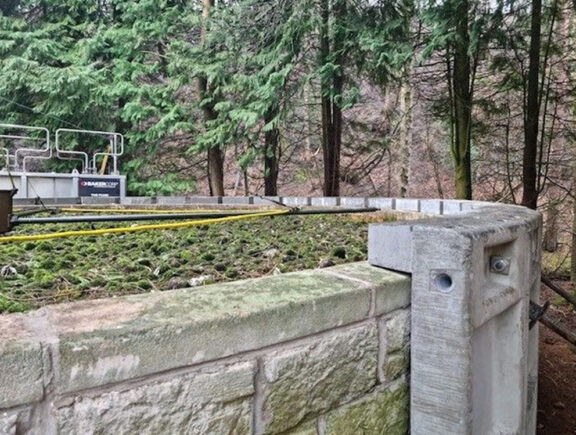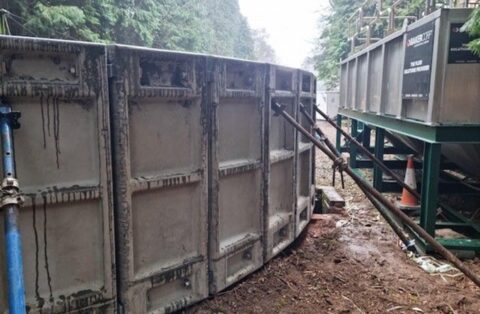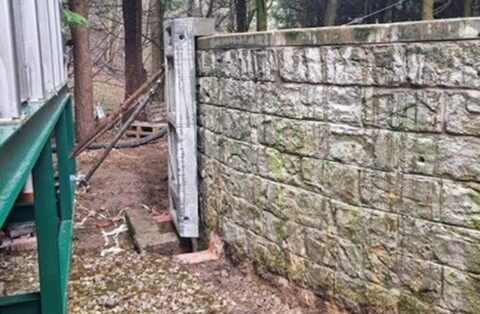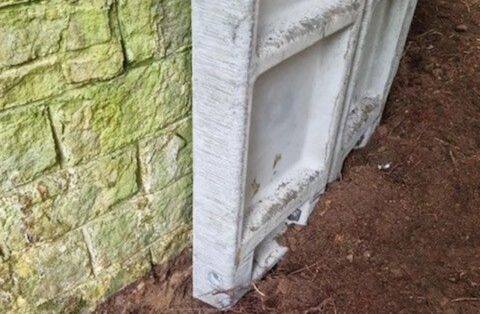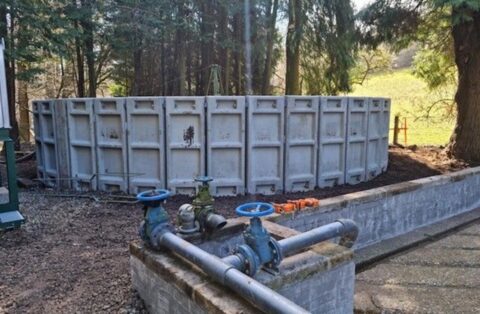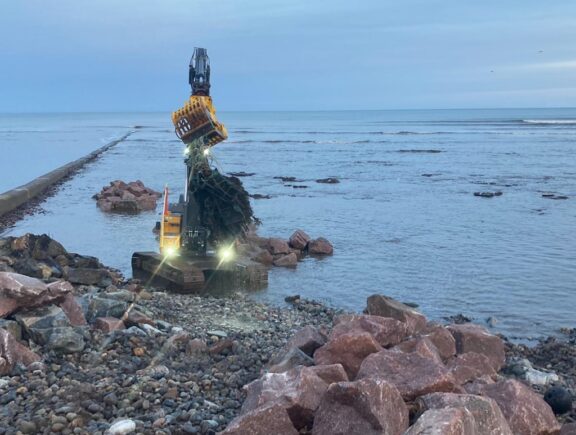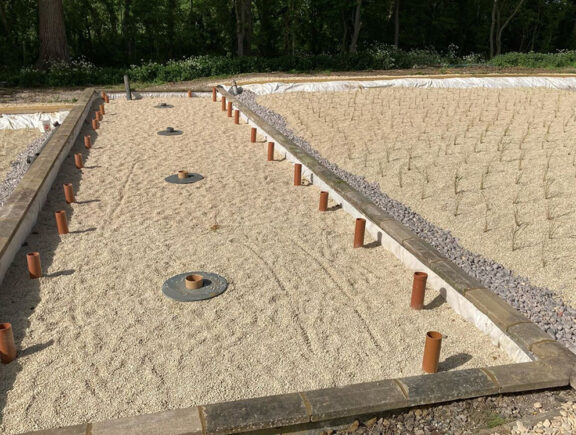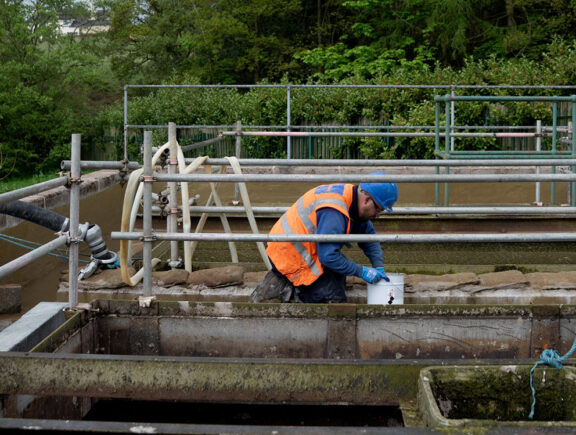Before works could be begin, a temporary treatment tank was erected to ensure wastewater would continue to be processed whilst the asset was offline. The main filter inlet pipe was disconnected and re-routed through a mobile lamella unit using wire armoured hose. This required very careful management as the pump could only be turned off for a short period, after which wastewater would flood on to the site and into the adjacent stream, causing a major pollution incident. Finally, the outlet from the lamella was connected to the hummus tanks, again using wire armoured hose. The filter bed was then entirely isolated from incoming flows and work to the walls could commence.
To begin, the team put restraining ratchet straps around the tank to avoid further movement occurring. This allowed them to dismantle and rebuild the leaning parts of the wall, replace the dislodged blocks, and repoint blockwork where joint mortar was missing.
The tank was then encased by interconnecting pre-cast concrete panels to form a circular band around the tank to prevent any further outward movement of the wall. The panels were lifted into place using a tracked digger and temporarily stabilised with Acrow props until the full circle was connected.
Once the works were complete the temporary tank was removed and the filter bed was seeded over a four-week period, during which flows into the filter were gradually increased, until all flows were channelled to the filter. The lamella was then disconnected and removed from site.
The programme saved Stonbury’s client approximately 25% compared with the cost of a new tank and was considerably less carbon intensive. The asset lifespan was extended by a further 20 to 30 years.
